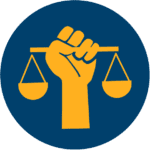Bethany Pray, CCLP’s Chief Legal and Policy Officer, provided testimony in support of House Bill 24-1133, Criminal Record Sealing & Expungement Changes. CCLP is in support of HB24-1133, as it is one of our priority bills.
Recent articles
CCLP testifies in support of Necessary Document Program updates
Charlie Kestler, one of CCLP’s Policy Fellows, provided testimony in support of Senate Bill 24-211, Adjustments to the Necessary Document Program. CCLP is in support of SB24-211, as it is one of our priority bills.
CCLP testifies in support of protections for DNC drivers
Charles Brennan provided testimony in support of House Bill 24-1129, Protections for Delivery Network Company Drivers. CCLP is in support of HB24-1129.
CCLP testifies in support of TANF grant rule change
CCLP's Emeritus Advisor, Chaer Robert, provided written testimony in support of the CDHS rule on the COLA increase for TANF recipients. If the rule is adopted, the cost of living increase would go into effect on July 1, 2024.
Letter: CCLP comments on Consumer Inflation Measures Proposed by Federal Statistical Agencies
The following letter was submitted to Chief Statistician Nancy Potok of Colorado’s Office of Management and Budget on June 18, 2019. (PDF version available here.)
Re: Directive No. 14, “Consumer Inflation Measures Produced by Federal Statistical Agencies”
The Colorado Center on Law and Policy submits these comments in response to the Office of Management and Budget’s request for comments on switching to a different measure of inflation for recalculating the yearly poverty line. We write to express our strong opposition to the proposed changes and urge the Office to withdraw the proposed rule in its entirety.
CCLP is a nonprofit, nonpartisan organization that advocates at the state and federal governmental levels to advance the needs and legal rights of Coloradans facing economic insecurity. Economic insecurity is the condition of not always having enough money to afford basic needs, such as adequate nutrition, safe housing, necessary medical care, transportation, and childcare. We understand that social and economic forces – including systemic racism and stagnant wages – are at the root of economic insecurity, which in turn negatively impacts health and further diminishes social and economic wellbeing.
Because you said you were not seeking comment on the impact of changing the HHS poverty guidelines, we are not commenting directly on that issue. However, were you to consider moving forward with a change to the thresholds that affects the guidelines, it would be imperative to first conduct in-depth research and analysis and solicit public comments regarding the potentially negative impact a change in the thresholds would have on low income and other vulnerable populations. People who would be most adversely affected by this unsupported change include children, working families, single parents, people of color, people with disabilities, and low income retirees. As outlined in these comments, we oppose the proposed rule because it will cause substantial harm to Coloradans facing economic insecurity and to populations already affected by racial bias. The programs targeted by this rule serve as valuable work supports for people of low incomes.
Self-Sufficiency in Colorado
The Federal Poverty Level (FPL) assumes that food is one-third of a household’s budget and all other expenses account for twice the amount spent on food, or two-thirds of a household’s budget. This measure has not kept pace with economic reality. According to the U.S. Department of Health and Human Services, the FPL for a two-person household in the contiguous United States in 2019 is $16,910.1 A worker employed at the minimum wage in Colorado ($11.10) and supporting a preschool-age child could potentially earn $23,088 per year before taxes, assuming employment at 40 hours per week for 52 weeks per year. According to the official measure, this household would not be living in poverty.
The Self-Sufficiency Standard for Colorado, however, generally requires an income of at least 200 percent of FPL or higher in many Colorado communities.2 The Self-Sufficiency Standard includes essential expenses not included in the FPL’s household budget, including transportation, taxes, medical care, and housing. Housing alone consumes 45 percent of the budget of a Colorado household living below Colorado’s Self-Sufficiency Standard.3
Under the Self-Sufficiency Standard, more than one in four Colorado households lack enough income to cover their necessities, and only about one-third of those households are considered poor under the official poverty measure. About 430,150 households across the state do not earn enough income to meet their basic needs. The vast majority of these households (88 percent) have at least one worker in the house.4
Assuming a family of one adult employed full-time at the minimum wage supporting one preschool child, there is no region in Colorado in which this family can meet all of its basic needs. Depending on region, Colorado’s Self-Sufficiency Standard ranges from $29,499 to $71,274 for a family consisting of one adult and one preschool child.5
Use of the C-CPI-U Versus the CPI-U in Calculating the FPL
As established above, the official FPL already undercounts the number of Coloradans who cannot afford basic necessities. Many important programs that benefit the public have eligibility criteria connected to the FPL, which uses the Consumer Price Index for All Urban Consumer (CPI-U) for its annual inflation adjustments. Using the Chained Consumer Price Index for All Urban Consumers (C-CPI-U) and/or the Personal Consumption Expenditures Price Index (PCEPI) instead of the CPI would shrink the number of people considered to be living in poverty and decrease access to these programs over time.
The CPI-U calculation is based on information about the expenditures of around 93% of the total U.S. population. It is calculated based on the change in prices of goods and services urban households consume.6 By contrast, the C-CPI-U assumes that as prices of goods rise, individuals substitute less expensive items, thereby reducing their overall expenses. However, there is evidence that low-income people already purchase less expensive items, leaving no room in their budgets to adjust downward. Costs as a share of overall income also rise more rapidly for low income households than for the population as a whole, due to the inflexible prices of necessary items such as housing, health care and child care.
The PCEPI, like the CPI-U, measures the changing prices of consumer goods and services and reflects changes in consumer behavior; it also covers out-of-pocket consumption and some government-funded consumption.7 The PCEPI has a major flaw for low-income people similar to the C-CPI-U — its assumptions do not consider that people with low incomes are already using lower-priced goods and often cannot substitute for even more inferior goods.
According to the Congressional Budget Office (CBO), these alternative indices used over a 10- year budget window would lead to a reduction in the poverty line of 2% and 3.4%, respectively, even while evidence shows that the burdens of poverty and inflation are on the rise.8 These percentage points translate to the potential loss of public benefits for hundreds of thousands of Americans across numerous federal programs.
Public Benefits Programs Function as Essential Community Supports
Public benefits programs such as Medicaid and the Supplemental Nutrition Assistance Program (SNAP) function as necessary community supports, which among other things assist people with low incomes in maintaining employment. Using an alternate index in calculating the FLP would remove these supports from hundreds of thousands of people over time.
For example, employees in low-wage occupations often do not have access to affordable health insurance other than Medicaid. The Medicaid expansion and the Affordable Care Act have increased employment in this group.9 According to the Center on Budget and Policy Priorities (CBPP), a national nonpartisan research and policy institute, more than 250,000 adults would lose coverage through the ACA’s Medicaid expansion as a result of the proposed rule, and some very low-income parents covered through Medicaid in states that haven’t adopted the expansion would lose coverage as well. Millions of ACA marketplace consumers also would receive lower premium tax credits, meaning they would pay higher premiums, and more than 150,000 would get less help with cost sharing, leading to an increase in their deductibles.10
Nearly one in eleven (9.2%) Coloradans struggle to put food on the table, including many ablebodied, working adults who may be struggling due to a job loss, lack of available full-time hours, or minimum-wage pay.11 The CBPP estimates that if the poverty line is indexed to the C-CPI-U, by the tenth year hundreds of thousands of people, including many in Colorado, will lose eligibility for food assistance programs. This number includes nearly 200,000 people who receive SNAP benefits, more than 100,000 school-age children who receive free or reduced-price lunch, an additional 100,000 children who receive free meals, and about 40,000 infants and young children who receive benefits through the Special Supplemental Nutrition Program for Women, Infants, and Children (WIC).12 Furthermore, SNAP dollars are an engine of economic activity. A widely cited statistic from the Congressional Budget Office states that every $1 spent on SNAP generates a return of $1.70 in economic activity. Reducing eligibility for SNAP can have major impacts on a community’s economy.
Conclusion
For the foregoing reasons, we urge the Office not to finalize this rule. At the very least, we request that the Office conduct in-depth research and analysis and solicit public comments regarding the potentially negative impact a change in these thresholds would have on low income and other vulnerable populations.
If you have any questions, please contact Sara Lipowitz, Public Benefits Attorney at the Colorado Center on Law and Policy, 303-573-5669, slipowitz@copolicy.org.
Respectfully submitted,
Sara Lipowitz
Public Benefits Attorney
Colorado Center on Law and Policy
1 https://aspe.hhs.gov/poverty-guidelines
2 The State of Working Colorado, Michelle Webster and Claire Sheridan, Colorado Center on Law and Policy, https://copolicy.org/wp-content/uploads/2019/01/SWCO-18-19-report_FINAL_1.8.19-1.pdf, p. 22.
3 Diana Pearce, Overlooked & Undercounted 2018: Struggling to Make Ends Meet in Colorado. Available at https://copolicy.org/pub_library/sss2018.
4 The State of Working Colorado, Michelle Webster and Claire Sheridan, Colorado Center on Law and Policy, https://copolicy.org/wp-content/uploads/2019/01/SWCO-18-19-report_FINAL_1.8.19-1.pdf, p. 22.
5 The Self-Sufficiency Standard for Colorado 2018, prepared for the Colorado Center on Law and Policy by Diana M. Pearce, Ph.D., University of Washington School of Social Work, December 2018, p. 7.
6 U.S. Department of Labor, Bureau of Labor Statistics, Consumer Price Indexes Overview, https://www.bls.gov/cpi/overview.htm (last modified Jun. 5, 2018).
7 Todd E. Clark, Fed. Res. Bank of Kansas Econ. Rev., A Comparison of the CPI and PCE Price Index (1999), available at https://www.bea.gov/resources/learning-center/what-to-know-prices-inflation.
8 See:
https://gregkaplan.uchicago.edu/sites/gregkaplan.uchicago.edu/files/uploads/kaplan_schulhoferwohl_jme_2017.pdf; and https://papers.ssrn.com/sol3/papers.cfm?abstract_id=2567357
9 https://www.kff.org/medicaid/issue-brief/the-effects-of-medicaid-expansion-under-the-aca-updated-findings-froma-literature-review-march-2018/
10 Administration’s Poverty Line Proposal Would Cut Health, Food Assistance for Millions Over Time, by Aviva Aron-Dine, Matt Broaddus, Zoë Neuberger, and Arloc Sherman, Center on Budget and Policy Priorities, https://www.cbpp.org/research/poverty-and-inequality/administrations-poverty-line-proposal-would-cut-health-food
11 https://www.ers.usda.gov/webdocs/publications/90023/err-256.pdf?v=0
12 Id.





